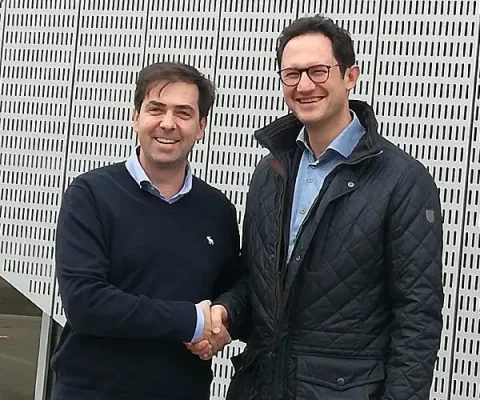
MABLINK BIOSCIENCE Adopts Agatha Software Solutions

Tokyo, Japan; Lyon, France; Boston, USA, January 10, 2020 – Agatha Inc., a global leader in quality and content management solutions for life sciences, today announced that Mablink Bioscience, a French-based biotech company specialized in immuno-oncology, is adopting Agatha’s solution.
View this Press Release in French: https://www.agathahealth.com/project/mablink-bioscience-adopte-les-solutions-logicielles-agatha/
Mablink aims to democratize the development of 3rd generation Antibody-Drug Conjugates (ADCs), which is a new class of cancer drugs. Mablink’s approach is rooted in its expertise in chemistry, pharmacology, and immuno-oncology in order to develop a hydrophilic easy-to-implement platform for next-generation ADCs.
“By equipping our company with the solution developed by Agatha, we want to give ourselves the possibility to scale swiftly and to be able to professionally manage the requests of our customers and partners. The willingness to structure our processes with scalable solutions like Agatha’s, from the beginning, is part of our strategy,” said Jean-Guillaume Lafay, CEO of Mablink.
“Mablink and Agatha share a commitment to speed and innovation, ensuring that new medical advances are available to patients as soon as safely possible,” said Guillaume. “We look forward to being a partner to Mablink in their fight against cancer.”
About Mablink
Mablink Bioscience is a French-based biotechnology company founded in 2018, specialized in the development of a new class of cancer drugs, called Antibody Drug Conjugate (ADC). Mablink leverages its expertise in chemistry, pharmacology, and immuno-oncology and its patented technology platform to design 3rd generation ADCs that are less toxic, more efficient and easy to manufacture. Mablink’s technological platform is universal and adapts to all types of drug-molecule. Moreover, it makes it possible to design 3rd generation ADCs that are highly loaded with drug molecules while retaining excellent pharmacological properties, in order to increase the effectiveness of targeted therapies in advanced cancers.
mablink.com
About Agatha, Inc.
Agatha, Inc. is a leading strategic software solutions provider to the health care and life sciences industry. Agatha is dedicated to helping the world’s Hospitals, biotechnology, pharmaceutical, contract research organizations, and medical device firms optimize the management of their Quality, Regulatory and Clinical documentation and processes.
Agatha solutions are available immediately, are compliant with applicable regulations (such as FDA 21 CFR part 11 and are designed for rapid adoption and effective scaling. Agatha’s clients are able to immediately decrease their compliance risk and increase their productivity; they reduce the time spent to manage their clinical, quality and regulatory documentation by 80% on average. Agatha is the trusted partner of more than 200 hospitals, research centers, CROs, pharmaceutical companies and medical device companies worldwide.
Company Name: Agatha Inc.
Representative Director: Chiemi Kamakura
Office: 2F FtF Bldg, 1-2 Hakozaki-cho, Nihombashi, Chuo-ku, Tokyo 103-0015 Japan
Date of incorporation: October 2, 2015
Amount of capital: 535 million JPY (including legal capital surplus)
URL: https://en.agathalife.com
US Contact:
Ken Lownie
email: ken.lownie@agathalife.com
phone: 1 978.618.2363
https://en.agathahealth.com
その他ニュース
Ready do dive in?
For inquiries about our products and services, or to sign up for a demo, click here.
